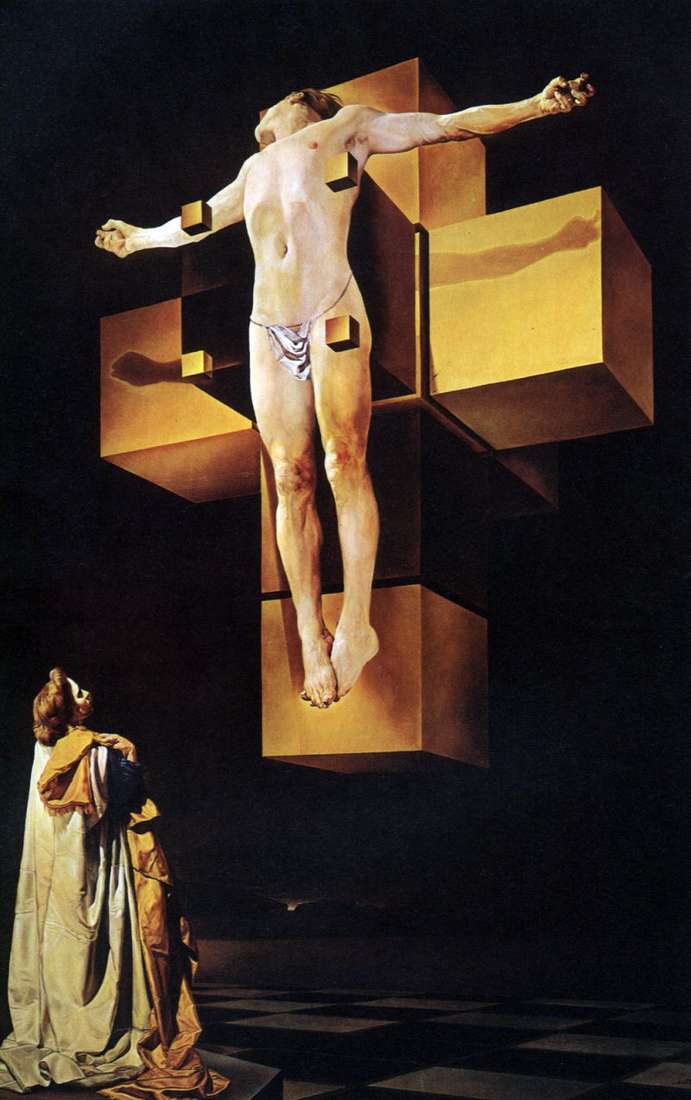
The painting of the Spanish surrealist artist Salvador Dalí is full of dreams and “visions”, but much of his art came from the mind, for example the idea of depicting in the presented picture a sweep of Hypercube instead of a cross.
Thus, the artist encounters a clear geometric form and suffering of Christ, underlined by his curved body with an outstretched thorax. This gives rise to a special tension with which the canvas is filled. So Dali seems to make it clear that God is crucified by the callousness and coldness of the world.
In this work, Dalí continues the tradition of classical Western European painting, when in pictures the evangelical plots depicted specific people, contemporaries of the artist. Here Gala, wife and muse Dali is looking at the crucified Christ. But she is not just before the Crucifixion, but contemplates it. It is presented to her inward vision, this is her vision.
In the canvas “The Crucifixion, or Hypercubic Body,” written by Dali in his homeland after returning from America, was reflected in the Spanish religious temperament – passionate and at times ecstatic.
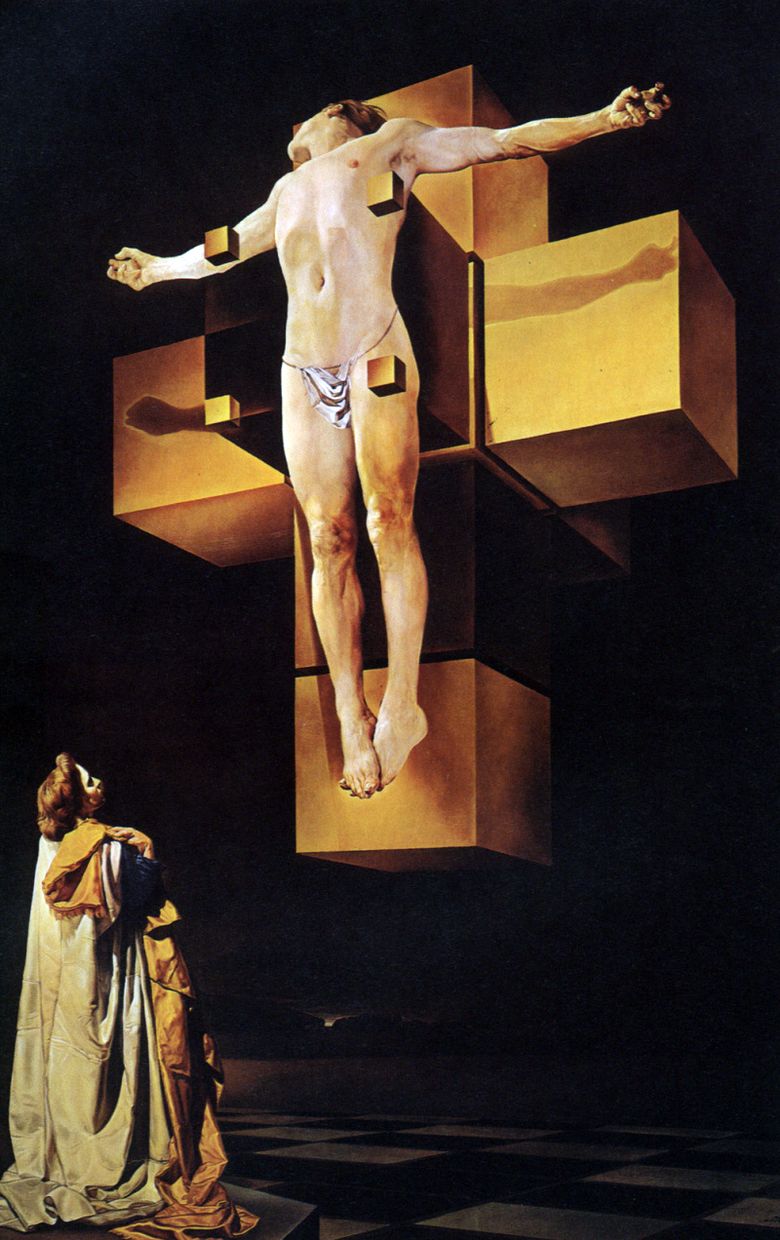 Crucifixion – Salvador Dali
Crucifixion – Salvador Dali Senicitas by Salvador Dali
Senicitas by Salvador Dali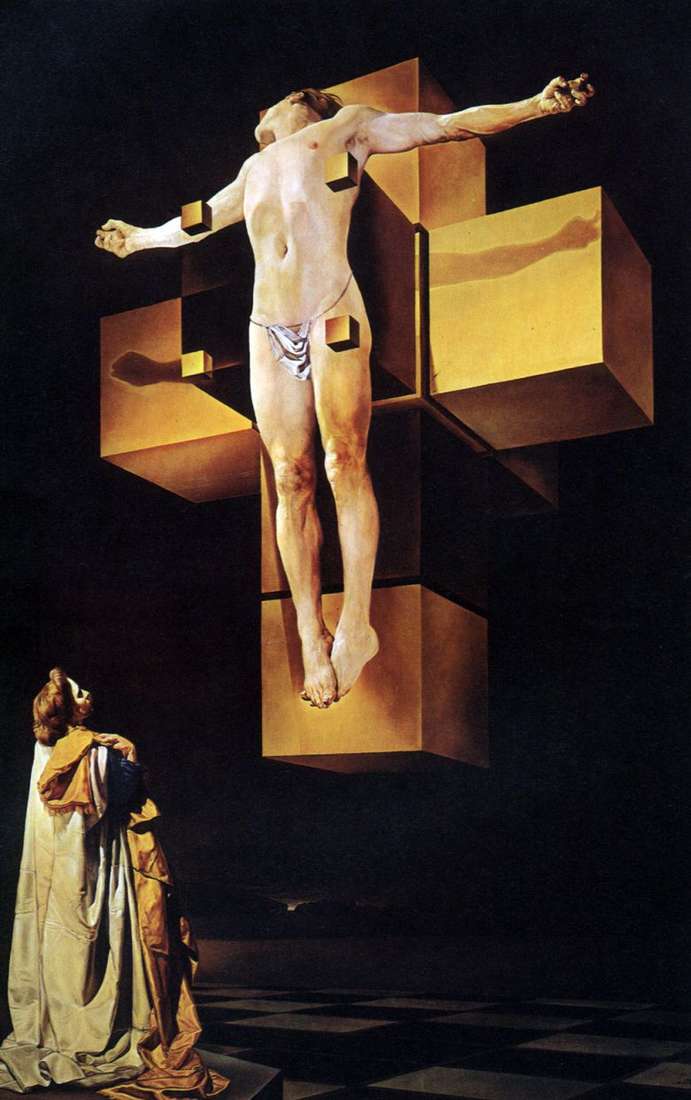 Crucifixión – Salvador Dali
Crucifixión – Salvador Dali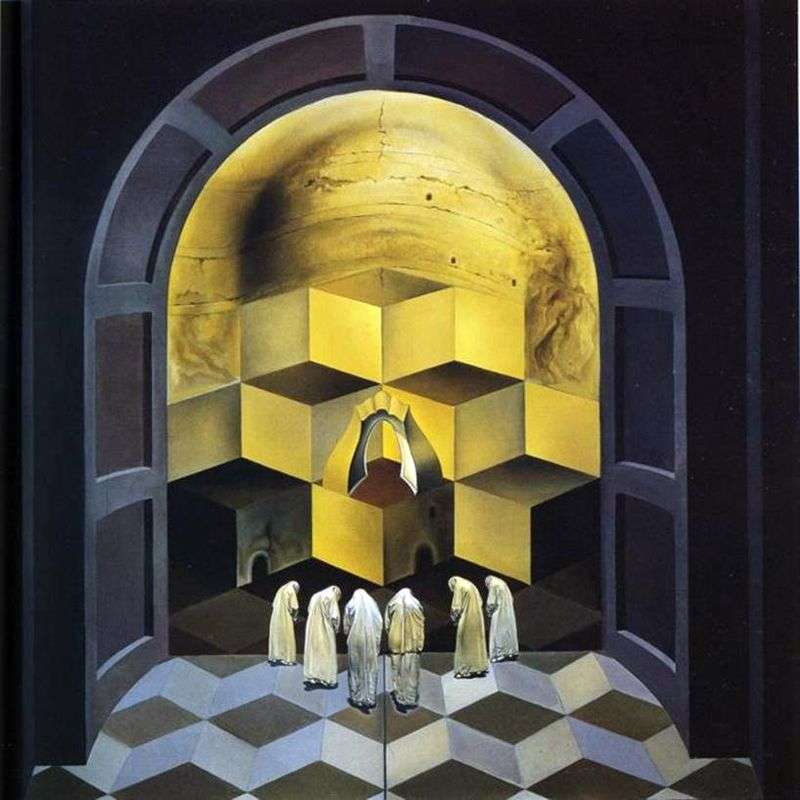 Skull of Zurbaran by Salvador Dali
Skull of Zurbaran by Salvador Dali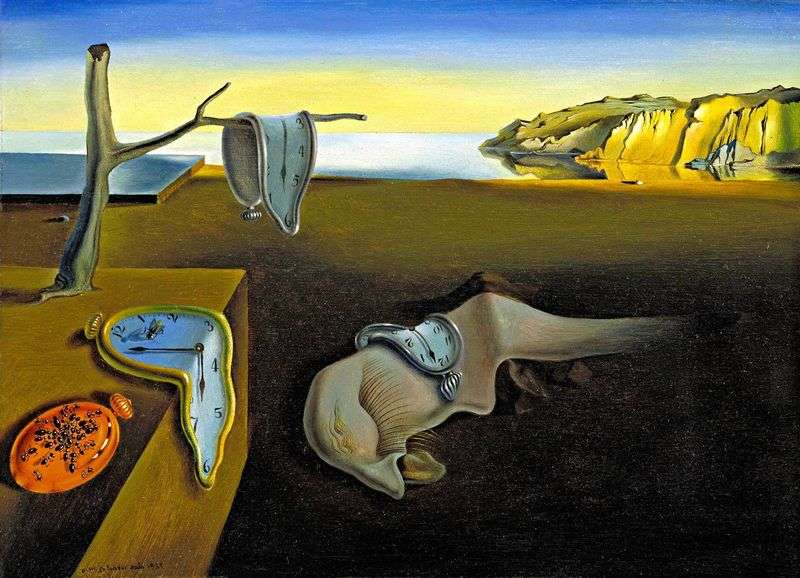 Consistency of memory by Salvador Dali
Consistency of memory by Salvador Dali Christ of St. John Cross by Salvador Dali
Christ of St. John Cross by Salvador Dali Self-portrait with “Yumanite” by Salvador Dali
Self-portrait with “Yumanite” by Salvador Dali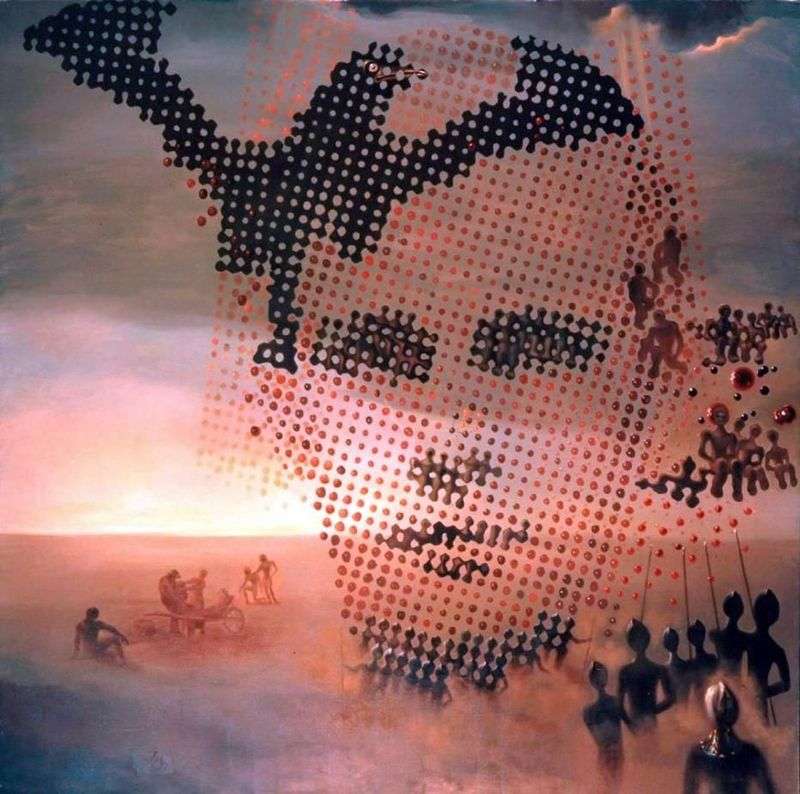 Portrait of my deceased brother by Salvador Dali
Portrait of my deceased brother by Salvador Dali